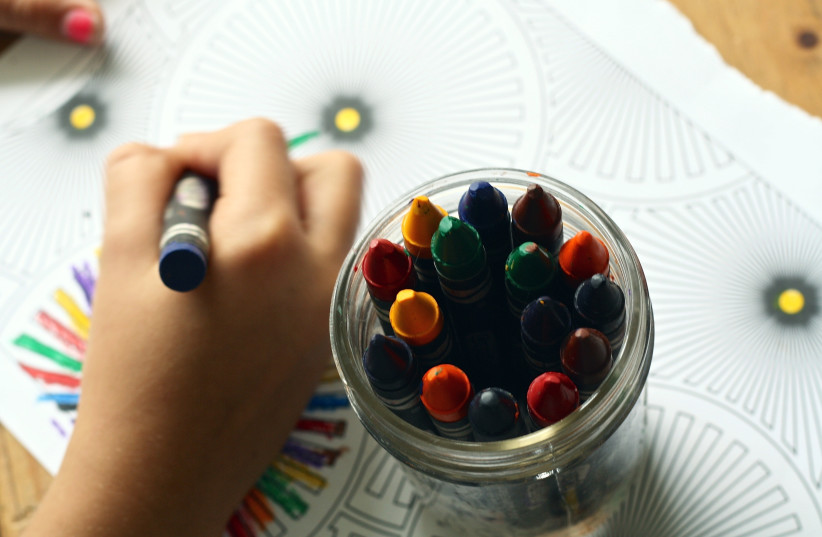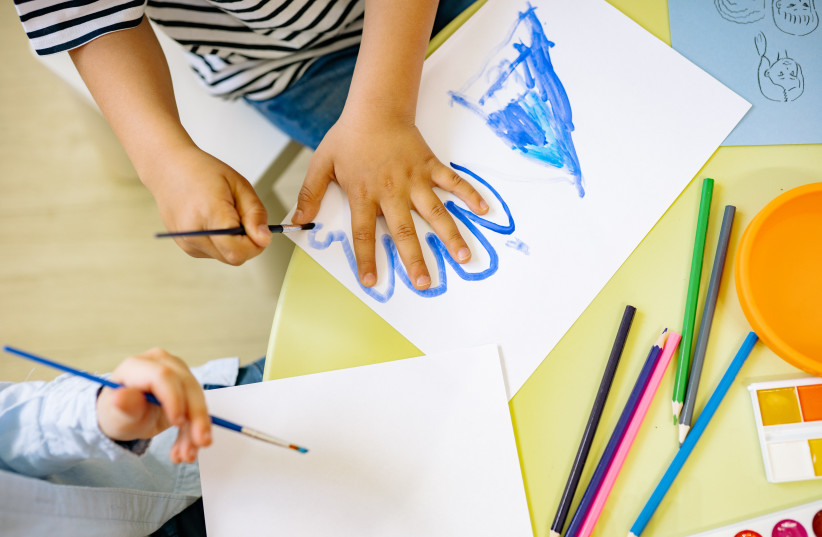Children's drawings are one-way kids tell about their world, mimic others and express external influences.
Analyzing their paintings, which colors they choose and which dominate, a parent can see how a child is feeling.
Most toddlers at around age two begin to identify the primary colors (red, yellow and blue) and then the other colors. Most kids learn the names of the basic colors between the ages of two-three.
This is an average range; some will learn colors even earlier and some only at age four will grasp the names of eight to ten colors. Remember that there are personal differences in the rate of children's development.
If the environment is encouraging and tailored to children's capabilities and rhythm of natural development, this will help them acquire skills that are part of the maturation processes, even with regard to colors.

How to introduce colors into the world of young children:
• Pleasure: Understanding colors should be done with pleasure, when kids are ready to learn and without pressure. Ask kids if they know which color is which; encourage but don't test.
• Exposure and experience: Give kids colorful and intriguing stimuli in their immediate environment, and relate naturally to the different colors. You don't need to buy specific games. Instead, point out to kids the colors of the things around them.
• Use memory supporters: Create a permanent connection to colors: yellow- banana, green- grass, red- tomato, etc. During the game, add clues to each color to help kids remember and retrieve the names of colors from their memory.
• Color games: At home and outside take an object in a particular color and look for more things in the same color. Another game is to create a color book with each page being a different color. The child can cut out pictures and glue them onto the page or draw things in the same color. For kids who have difficulty understanding colors, focus on each color separately for several days.
Why does my kid draw only with black?
If a child draws only using black should you be concerned? For us, black is negative, but many kids love black because of its intensity and the way it stands out on the white page.
Alternatively, a child can draw in colors that reflect his surroundings - a night will appear in black, morning will appear in yellow or white. Red is among the first colors that babies identify, so there's a preference even among toddlers to draw with it and certainly it's one of the first colors they recognize.
What does each color mean?
Red: Dominant children will embrace red, which is used to express love or anger. You might see excessive use of red in kids who tend to be aggressive.
Yellow: This color is linked to one who's very sensitive, uses moderation, has patience and inner wisdom, is quiet and has a strong family connection and rich inner world, and has good powers of concentration.
Orange: Linked to creativity, optimism, a desire to experiment and do something that's not routine. It can testify to a child who needs to understand the internal logic of laws in order to obey them.

Blue: This color symbolizes harmony and one who's relaxed, calm, and able to make good social connections. A kid who likes blue is an individual who will reflect internally yet excessive use of blue can mark disconnection and distance.
Purple: Linked to imagination and intuition. Kids who like purple have a personal internal rhythm and are idealists and dreamers who want to change the world.
Green: Kids who need space, love nature and life and are creative.
Black: As mentioned, it's a favorite color with many kids who like to see the contrast between it and the white page. Excessive use may indicate a child is in some distress.
White: Using white or leaving many white parts on the page may show loss or loneliness and therefore translate into social difficulty or difficulty in personal expression. Balanced use of this color where the white as a color isn't noticeable indicates social and personal harmony.
It's important to note that if kids have difficulty understanding colors along with recall problems or speech delays, contact a speech therapist. If certain colors dominate and are used often consult an emotional therapist or developmental psychologist.
If a child has trouble learning and memorizing color names, this might indicate color blindness so go to a children's ophthalmologist who'll use special tests to examine color vision.
Sharon Aharoni is the director and pedagogical instructor for kindergartens in the Newton network. She holds an MA in child development, counseling and training for early childhood from Bar Ilan University. Her B.eD. is from the Seminar HaKibbutzim and is in early childhood education and pedagogical management.
